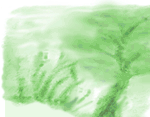



|
|
Winter 1991:
The following article was written by Martin Calvert and originally printed in the RSPB Leeds Local Group Newsletter). It has been reproduced with his permission.
The Gledhow Valley Nestbox Scheme is an impressive title for six home made nestboxes dotted around the woodland alongside Gledhow Valley Road, but that was the name conferred by the Leeds' Parks Co-ordination Officer, Mr Brown, when giving his authorisation for the scheme to commence.
Before birds can nest in boxes, the boxes have to survive the elements and the attentions of any vandals. Thus the boxes have to be off the beaten track, reasonably high up in a tree i.e. well above eye level, and not facing the prevailing wind.
In my experience, there are two sorts of vandal to watch out for - the first type is predictable and throws bricks at nestboxes or removes them and starts fires in them. When the fires first happened I just presumed they were caused by COAL TITS or FIRECRESTS!
The second type of vandal is devious, not causing wholesale destruction, but doing enough to warrant removal of the box for repairs. This vandal has damaged fifteen boxes over the last two years and has even been seen in the act, but the prosecutions are hard to bring against such a popular character especially when one is in the RSPB. The only answer is to fit metal surrounds to all the hole nestboxes to prevent the greater spotted woodpecker from doing further damage. In defence of the 'Greater Pecker', I suppose it only seemed like just another hole in a tree your honour!
So, if the nestboxes survive storms, woodpeckers, squirrels and nasty vandals, then birds may decide to use them. Most of the boxes are used through the winter months by roosting birds, usually just one to a box. Great tits and blue tits, the summer inhabitants, are the usual roosting birds.
The occupancy rate of the six open fronted boxes was consistent, the same as in 1989, a steady zero. Dream on!
The last task of the year, carried out in October, is the cleaning of the boxes, removing nests, bodies and addled eggs, often disturbing earwigs in the process. This would be a totally pleasant task were it not for the attentions of the parasites that remain in the boxes once the birds have flown. They're very clever, hopping on wherever they can and hiding until they become peckish. So you're on the settee at night, nicely settled, watching "Emmerdale", when the itching starts. You can never find the blighters. Then the bites show up and last for two or three Savlon days before they disappear. Thankfully they don't take a long term liking to humans, well not me anyway.
Thus the year ends, the boxes are refurbished, ready to survive the winter and then I can await the arrival of the flycatchers!
To see how successful the nestboxes have been from the start of the scheme to the present day, please see the Nestbox Records for Gledhow Valley page. If you have any information, stories, pictures or memories you would like to contribute to this section of the web site, please contact us.
|
| ||||||
 | ||||||||
 The idea behind the scheme is to encourage the use of nestboxes by birds that might otherwise not be able to breed in the valley. I must admit that the vision of spotted flycatchers returning to breed in Gledhow Woods, or even enticing that nestbox lover the pied flycatcher, did spur the scheme on. Everybody has to have a dream after all.
The idea behind the scheme is to encourage the use of nestboxes by birds that might otherwise not be able to breed in the valley. I must admit that the vision of spotted flycatchers returning to breed in Gledhow Woods, or even enticing that nestbox lover the pied flycatcher, did spur the scheme on. Everybody has to have a dream after all. Then along comes spring with its glorious bird song, courtship, nest building and the ensuing new generation of birds. The occupancy rate of the 34 hole nestboxes was 75% (The scheme has expanded somewhat over the last two years). Approximately 189 young birds flew from the boxes this year, consisting of 161 blue tits and 28 great tits, a fact which was probably noted by the local sparrowhawks. The only tragedy was a box knocked to the ground and pulled apart just after hatching by someone with motives I cannot begin to understand. Oh, and my friend the woodpecker predated one box also.
Then along comes spring with its glorious bird song, courtship, nest building and the ensuing new generation of birds. The occupancy rate of the 34 hole nestboxes was 75% (The scheme has expanded somewhat over the last two years). Approximately 189 young birds flew from the boxes this year, consisting of 161 blue tits and 28 great tits, a fact which was probably noted by the local sparrowhawks. The only tragedy was a box knocked to the ground and pulled apart just after hatching by someone with motives I cannot begin to understand. Oh, and my friend the woodpecker predated one box also.